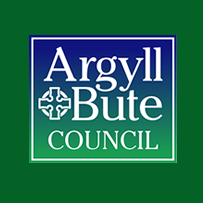Visit Explore Causeway Coast and Glens
Visit Explore Causeway Coast and Glens
 About - Argyll and Bute Council
About - Argyll and Bute CouncilConstituent country - Scotland
No. of Areas - 1
Population - 87,920
Area - 6,907 km2
Pop. Density - 13 km2
Here are some key facts about Argyll and Bute, a region located in the west of Scotland:
Location: Argyll and Bute is situated in the western part of Scotland and encompasses a diverse landscape of mountains, islands, and coastline along the west coast.
Area and Population: It is one of Scotland's largest council areas by area, covering approximately 6,909 square kilometers (2,669 square miles). As of the 2011 census, it had a population of around 88,000 people.
Administrative Structure: Argyll and Bute is a unitary authority, meaning it is both a council area and a council. It was formed in 1996 by the merger of Argyll and Bute District and part of the former Strathclyde Region.
Island Groups: The region includes several island groups, notably the Inner Hebrides and the Southern Hebrides. Notable islands include Islay, Mull, Jura, Coll, Tiree, and Bute.
Economy: Historically, Argyll and Bute's economy relied heavily on agriculture, fishing, and forestry. In recent years, there has been growth in sectors such as tourism, renewable energy, and aquaculture.
Tourism: The region is renowned for its stunning natural beauty, with attractions such as Loch Lomond and The Trossachs National Park, Ben Nevis (the UK's highest mountain), and numerous picturesque islands and coastal villages.
Whisky Production: Islay, one of the islands within Argyll and Bute, is famous for its whisky production. It is home to several distilleries known for their distinctive peaty flavors, including Laphroaig, Lagavulin, and Ardbeg.
Historical Sites: Argyll and Bute boasts a rich history, with numerous historical sites and landmarks. These include ancient castles like Inveraray Castle and Dunstaffnage Castle, as well as prehistoric sites like Kilmartin Glen.
Transport: While much of Argyll and Bute's terrain is rural and remote, there are transportation links connecting its various islands and mainland areas. These include ferries, bridges, and roads.
Culture and Language: The region has a rich cultural heritage, with influences from Gaelic, Norse, and Scottish traditions. Gaelic is still spoken in some parts of Argyll and Bute, and the area hosts various cultural events and festivals throughout the year.
Marine Life: Argyll and Bute's coastal waters are home to diverse marine life, including seals, dolphins, porpoises, and various seabird species. The region is also known for its seafood, including renowned Scottish salmon and shellfish.
Challenges: Despite its natural beauty and cultural richness, Argyll and Bute faces challenges common to rural areas, including depopulation, limited access to services, and the need for sustainable economic development.
These facts offer a glimpse into the geography, culture, economy, and challenges of Argyll and Bute, highlighting its significance within Scotland.